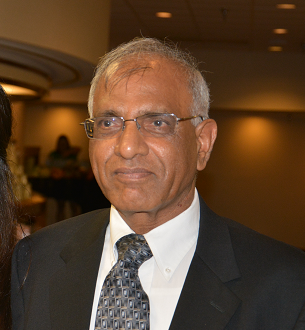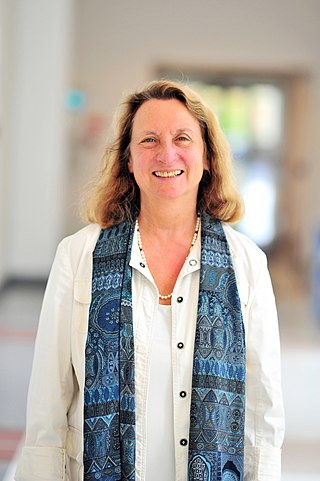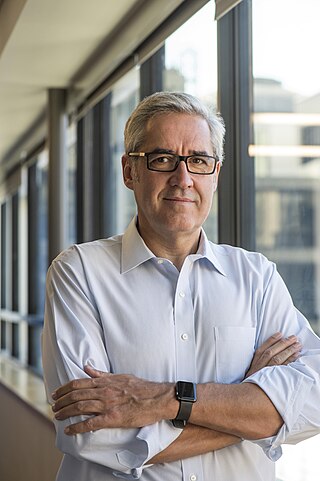Olgierd Cecil Zienkiewicz was a British academic of Polish descent, mathematician, and civil engineer. He was born in Caterham, England. He was one of the early pioneers of the finite element method. Since his first paper in 1947 dealing with numerical approximation to the stress analysis of dams, he published nearly 600 papers and wrote or edited more than 25 books.
This is an alphabetical list of articles pertaining specifically to Engineering Science and Mechanics (ESM). For a broad overview of engineering, please see Engineering. For biographies please see List of engineers and Mechanicians.

Guy Antony Jameson, FRS, FREng is Professor in the Department of Aerospace Engineering at Texas A&M University. Jameson is known for his pioneering work in the field of computational fluid dynamics. He has published more than 300 scientific papers in a wide range of areas including computational fluid dynamics, aerodynamics, and control theory.

Johann Hadji Argyris FRS was a Greek pioneer of computer applications in science and engineering, among the creators of the finite element method (FEM), and later Professor at the University of Stuttgart and Director of the Institute of Structural Mechanics and Dynamics in Aerospace Engineering.
John Tinsley Oden was an American engineer. He was the Associate Vice President for Research, the Cockrell Family Regents' Chair in Engineering #2, the Peter O'Donnell, Jr. Centennial Chair in Computing Systems, a Professor of Aerospace Engineering and Engineering Mechanics, a Professor of Mathematics, and a Professor of Computer Science at The University of Texas at Austin. Oden has been listed as an ISI Highly Cited Author in Engineering by the ISI Web of Knowledge, Thomson Scientific Company.

Thomas Joseph Robert Hughes is a Professor of Aerospace Engineering and Engineering Mechanics and currently holds the Computational and Applied Mathematics Chair (III) at the Oden Institute at The University of Texas at Austin. Hughes has been listed as an ISI Highly Cited Author in Engineering by the ISI Web of Knowledge, Thomson Scientific Company.

S. Shankar Sastry is the Founding Chancellor of the Plaksha University, Mohali and a former Dean of Engineering at University of California, Berkeley.

Katepalli Raju Sreenivasan is an aerospace scientist, fluid dynamicist, and applied physicist whose research includes physics and applied mathematics. He studies turbulence, nonlinear and statistical physics, astrophysical fluid mechanics, and cryogenic helium. He was the dean of engineering and executive vice provost for science and technology of New York University. Sreenivasan is also the Eugene Kleiner Professor for Innovation in Mechanical Engineering at New York University Tandon School of Engineering and a professor of physics and mathematics professor at the New York University Graduate School of Arts and Science and Courant Institute of Mathematical Sciences.
Ali Hasan Nayfeh was a Palestinian-Jordanian mathematician, mechanical engineer and physicist. He is regarded as the most influential scholar and scientist in the area of applied nonlinear dynamics in mechanics and engineering. He was the inaugural winner of the Thomas K. Caughey Dynamics Award, and was awarded the Benjamin Franklin Medal in mechanical engineering. His pioneering work in nonlinear dynamics has been influential in the construction and maintenance of machines and structures that are common in daily life, such as ships, cranes, bridges, buildings, skyscrapers, jet engines, rocket engines, aircraft and spacecraft.
Satya Atluri was an Indian American engineer, educator, researcher and scientist in aerospace engineering, mechanical engineering and computational sciences, who was a Distinguished Professor Emeritus of Aerospace Engineering at the University of California, Irvine. Since 1966, he made fundamental contributions to the development of finite element methods, boundary element methods, Meshless Local Petrov-Galerkin (MLPG) methods, Fragile Points Methods (FPM), Local Variational Iteration Methods, for general problems of engineering, solid mechanics, fluid dynamics, heat transfer, flexoelectricity, ferromagnetics, gradient and nonlocal theories, nonlinear dynamics, shell theories, micromechanics of materials, structural integrity and damage tolerance, Orbital mechanics, Astrodynamics, digital Twins of Aerospace Systems, etc.

Junuthula N. Reddy is a Distinguished Professor, Regent's Professor, and inaugural holder of the Oscar S. Wyatt Endowed Chair in Mechanical Engineering at Texas A&M University, College Station, Texas, USA.[1] He is an authoritative figure in the broad area of mechanics and one of the researchers responsible for the development of the Finite Element Method (FEM). He has made significant seminal contributions in the areas of finite element method, plate theory, solid mechanics, variational methods, mechanics of composites, functionally graded materials, fracture mechanics, plasticity, biomechanics, classical and non-Newtonian fluid mechanics, and applied functional analysis. Reddy has over 620 journal papers and 20 books and has given numerous national and international talks. He served as a member of the International Advisory Committee at ICTACEM, in 2001 and keynote addressing in 2014.[2][3]
John Leask Lumley was an American fluid dynamicist and a professor at Cornell University. He is widely known for his research in turbulence and is the coauthor of A First Course in Turbulence along with Hendrik Tennekes.
Holt Ashley was an American aeronautical engineer notable for his seminal research on aeroelasticity.

René de Borst is a Dutch civil engineer who is known for his work on computational mechanics and fracture mechanics. Since January 2016 he is the Centenary Professor of Civil Engineering at the University of Sheffield.

Elaine Surick Oran is an American physical scientist and is considered a world authority on numerical methods for large-scale simulation of physical systems. She has pioneered computational technology to solve complex reactive flow problems, unifying concepts from science, mathematics, engineering, and computer science in a new methodology. An incredibly diverse range of phenomena can be modeled and better understood using her techniques for numerical simulation of fluid flows, ranging from the tightly grouped movements of fish in Earth's oceans to the explosions of far-flung supernovae in space. Her work has contributed significantly to the advancement of the engineering profession.
Sébastien Candel is a French physicist, Emeritus Professor of École Centrale Paris.

Jaime Peraire, a native of Barcelona, is the H. N. Slater Professor of Aeronautics and Astronautics and former head of the Department of Aeronautics and Astronautics at the Massachusetts Institute of Technology. He specializes in computational aspects of aeronautics and astronautics, and is interested in improved teaching methods in various fields of engineering.

Alfio Quarteroni is an Italian mathematician.

Charles Meneveau is a French-Chilean born American fluid dynamicist, known for his work on turbulence, including turbulence modeling and computational fluid dynamics.
Michael Ortiz is a dual American-Spanish scientist and researcher in the fields of structural, continuum and computational mechanics and is a Frank and Ora Lee Marble Professor Emeritus of Aeronautics and Mechanical Engineering at California Institute of Technology. Prior to his arrival at Caltech in 1995, he was Professor of Engineering at Brown University.











